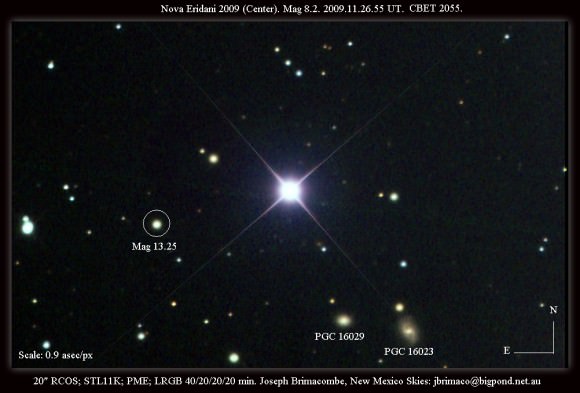Slow-Motion Supernova
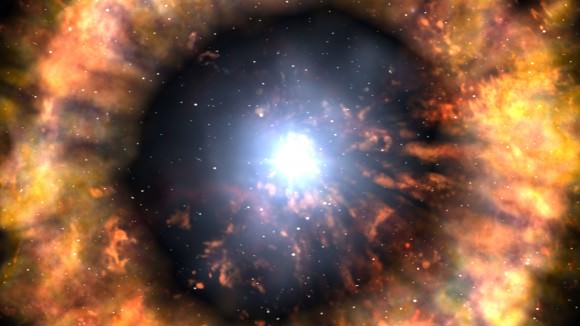
Supernovae are generally considered as fast and furious events. For the Type II, core collapse supernovae, the core implodes almost instantaneously although it takes some time for the shockwave to escape the star. As it does, the star brightens in what's known as the "rise time" of the supernova. For most Type II supernovae, this takes about a week.
So what are astronomers to make of supernova 2008iy that had an unprecedented rise time of at least 400 days?
(...)
Read the rest of Slow-Motion Supernova (426 words)
Amateur Spectroscopy

Amateur astronomers are a unique species worthy of their own reality TV show. Their craftsmanship, resourcefulness, dedication, and passion is simply amazing. Many professional astronomers rely heavily on amateurs for quick spot checks, discovery followups, collaboration on research projects, the diverse locations of their telescopes and their ability/willingness to put in long hours of observation. So what is spectroscopy, and what do the amateur astronomers get up to?
(...)
Read the rest of Amateur Spectroscopy (778 words)
The Next Generation of Heat Shield: Magnetic

Heat shields are an important part of any space vehicle that re-enters the Earth's atmosphere. The next generation of heat shields to protect astronauts and payloads on their re-entry into the Earth's atmosphere may use superconducting magnets to deflect the plasma that forms in front of spacecraft as they travel at high speeds in the air. The first test of such a heat shield could happen as early as ten years from now, and the basic technology is already in development.(...)
Read the rest of The Next Generation of Heat Shield: Magnetic (394 words)
Observing News: Nova Eridani or Flash Fire?
K. Itagaki of Yamagata, Japan was photographing the night sky in Eridanus two days ago when Hitoshi Yamaoka of Kyushu University noticed an anomaly – a possible classic nova event. Just how big a jump in amplitude did this star make? Try at least seven magnitudes within hours… and Joe Brimacombe was on it. (...)
Read the rest of Observing News: Nova Eridani or Flash Fire? (491 words)
Comets Posing as Asteroids (or is the the other way around?)

Asteroids are rocky bodies which belong between Mars and Jupiter. Comets are icy bodies that belong way out beyond Pluto. So what are comet-like objects doing in the asteroid belt?
(...)
Read the rest of Comets Posing as Asteroids (or is the the other way around?) (679 words)
Tips for Viewing the Geminid Meteor Shower
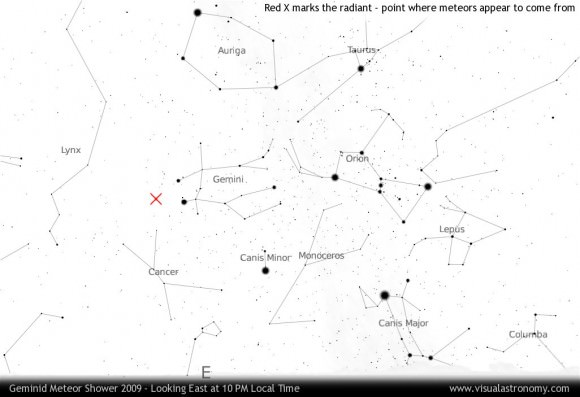
Occurring every year in mid-December, the Geminid meteor shower is commonly referred to as the most reliable meteor shower of the year. That is, it almost always puts on a great show!
The Geminid meteor shower is sure to be a stunning show this year, as the Moon will not be visible at night, so its glow will not impede your meteor viewing ability. In addition, the Geminids' radiant is favorably positioned for most viewers at this time of year. In order to see the most meteors, I suggest the following tips:
(...)
Read the rest of Tips for Viewing the Geminid Meteor Shower (559 words)
The View from Down Under
Something that baffled me throughout my childhood, growing up in Australia, was the frequent references to the Man in the Moon, in children’s books and other popular media. I just couldn’t see it.
Only in my adult years have I put two and two together and realized that all those references were made by people from the Northern Hemisphere.
South of the equator we really are down under, even in astronomical terms. All the stuff you can see in the night sky around the celestial equator and the ecliptic we can see too, but it’s all upside down (or from our point of view, right side up).
So the lunar maria you see on the Moon’s surface, we can see too, but upside down none of it looks anything like a human face.(...)
Read the rest of The View from Down Under (366 words)
Astronomers Dig Up Relic of the Milky Way's Central Bulge
Like archaeologists who dig through the layers of dirt to unearth crucial pieces of the history of mankind, astronomers have been gazing through the thick layers of interstellar dust obscuring the central bulge of the Milky Way and have unveiled an extraordinary cosmic relic. Within the bulge is an unusual mix of stars in the stellar grouping known as Terzan 5, and such a mix has never been observed anywhere in the bulge before. This peculiar conglomeration of stars suggests that Terzan 5 is one of the bulge's primordial building blocks, most likely the relic of a dwarf galaxy that merged with the Milky Way during its very early days.
(...)
Read the rest of Astronomers Dig Up Relic of the Milky Way's Central Bulge (303 words)
Jupiter – Our Silent Guardian?
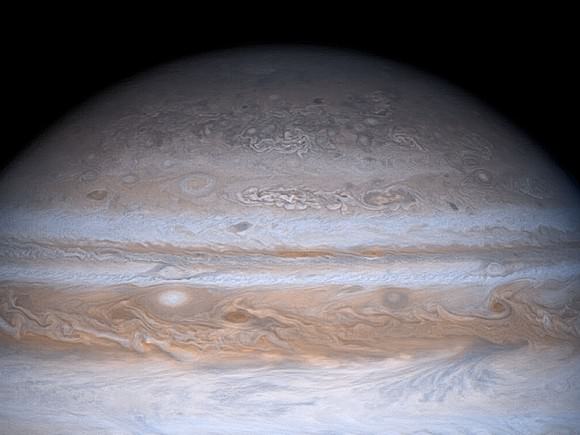
We live in a cosmic shooting gallery. In Phil Plait's Death From the Skies, he lays out the dangers of a massive impact: destructive shockwaves, tsunamis, flash fires, atmospheric darkening…. The scenario isn't pretty should a big one come our way. Fortunately, we may have a silent guardian: Jupiter.
(...)
Read the rest of Jupiter – Our Silent Guardian? (563 words)
Requiem – Daniel Marquardt
"Looking up in the sky is one of the greatest things a human being can do. Going out to a silent and dark site, enjoying the beauty of the Universe with friends. You will forget all the problems here on Earth, because you realize that we are only a little funny thing on this ball we call Earth, flying through our galaxy we call Milky Way. There is more out there that wants to be discovered. Sit back and take a journey through our real home and through space and time." And remember Daniel Marquardt… (...)
Read the rest of Requiem – Daniel Marquardt (663 words)
First Black Holes May Have Formed in "Cocoons"
Very likely, the last image that comes to mind when thinking of black holes is that they need to be nurtured, coddled and protected when young. But new research reveals the first large black holes in the universe likely formed and grew deep inside gigantic, starlike cocoons that smothered their powerful x-ray radiation and prevented surrounding gases from being blown away.
(...)
Read the rest of First Black Holes May Have Formed in "Cocoons" (503 words)
NASA Science News for November 24, 2009
Data from NASA's STEREO spacecraft have confirmed the stunning reality of monster waves on the sun known as "solar tsunamis."
FULL STORY at
http://science.nasa.gov/headlines/y2009/24nov_solartsunami.htm?list1035898
The Extremely Large Telescope
The European Southern Observatory (ESO) is planning on building a massive – and I do mean massive – telescope in the next decade. The European Extremely Large Telescope (E-ELT) is a 42-meter telescope in its final planning stages. Weighing in at 5,000 tonnes, and made up of 984 individual mirrors, it will be able to image the discs of extrasolar planets and resolve individual stars in galaxies beyond the Local Group! By 2018 ESO hope to be using this gargantuan scope to stare so deep into space that they can actually see the Universe expanding!(...)
Read the rest of The Extremely Large Telescope (462 words)
Hot Jupiters Bully Super Earths
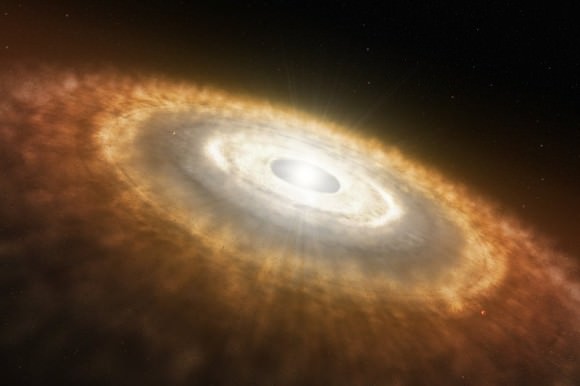
Bullies are everywhere and the universe is no exception. In our own solar system, Jupiter's mass is second only to that of the Sun. Its gravitational effects tug around a set of asteroids known as the Trojans and may prevent the asteroid belt from becoming anything more substantial. Fortunately, our humble planet gets along with this gravitational monstrosity, but it didn't have to be so. What could such massive menaces do to planets like Earth in newly forming solar systems?(...)
Read the rest of Hot Jupiters Bully Super Earths (579 words)
Cold as Hell with a Chance of Dust Storms: Weather Movies from M
If you think about it, those hypnotizing patterns of swirling clouds you see in TV weather reports are pretty amazing: satellites let us see what's happening in the skies all over the world. But these days, that kind of global vision even goes beyond the Earth. The Mars Reconnaissance Orbiter makes daily weather observations of the Red Planet, and mission scientists regularly compile the pictures into movies that are available online. The result is that anyone can follow along as fierce dust storms rage across the plains of Mars, clouds cling to the peaks of towering volcanoes and polar ice advances and retreats.(...)
Read the rest of Cold as Hell with a Chance of Dust Storms: Weather Movies from Mars (400 words)
